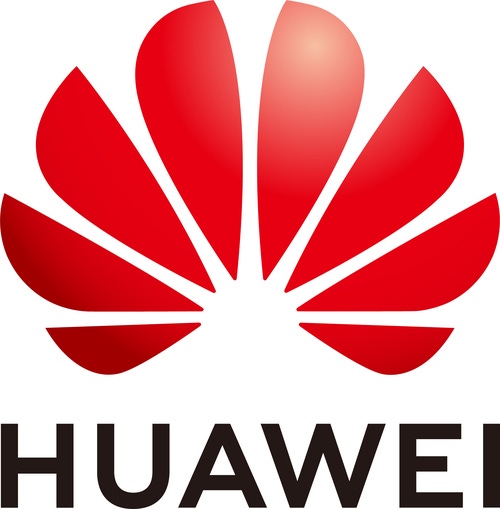Huawei: F5G Evolution, Reshaping Industry Productivity in Southern Africa
On July 6, Richard Jin, President of Huawei Optical Business Product Line, delivered a keynote speech entitled "F5G Evolution, Reshaping Industry Productivity" at the Huawei Eco-Connect Sub-Saharan Africa 2023. In the speech, he shared Huawei's understanding of F5G evolution and F5G industry applications to help Southern Africa build better optical connections. #Sponsored
July 11, 2023

On July 6, Richard Jin, President of Huawei Optical Business Product Line, delivered a keynote speech entitled "F5G Evolution, Reshaping Industry Productivity" at the Huawei Eco-Connect Sub-Saharan Africa 2023. In the speech, he shared Huawei's understanding of F5G evolution and F5G industry applications to help Southern Africa build better optical connections.

Richard Jin delivering his keynote speech
F5G is the fifth-generation fixed network standard defined by ETSI. With six core capabilities, F5G extends optical fibers to a wide range of industries, connecting homes, enterprises, machines, and data centers. In this way, "fiber to everywhere" is achieved, facilitating digital transformation of various industries.
According to Richard Jin, Africa has great potential for digital economy development. However, the fiber infrastructure development in Africa is far below the global average, presenting challenges and opportunities in equal measure. Huawei has worked with global industry customers and partners to develop more than 50 F5G solutions for industry sub-scenarios, covering more than 10 industries such as energy, transportation, education, and healthcare. For typical scenarios of greatest concern to partners in Southern Africa, Richard Jin focused on five F5G applications, including national backbone network, electric power, perimeter protection, campus, and Internet service provider (ISP).
F5G reshapes national backbone networks and builds all-optical digital highways: National communications backbone networks provide digital highways for a multitude of industries, implementing network coverage in remote areas, bridging the digital divide, and improving city governance and public service efficiency. Harnessing its industry-leading technologies such as all-optical cross-connect (OXC), ultra-long-distance 400G, and automatic switched optical network (ASON), Huawei helps numerous African countries build national infrastructure fiber backbone networks that feature high bandwidth, wide coverage, and high reliability, effectively promoting national economic development.
F5G reshapes the electric power industry and builds a highly reliable production network: As the optimal choice for the evolution of electric power production networks, optical service unit (OSU) — the fifth-generation hard isolation technology — inherits the hard isolation feature of synchronous digital hierarchy (SDH) to ensure production security, and meets the increasing bandwidth requirements brought by digital electric power and broadband over power line operations. In the future, the OSU will be extended to power distribution networks and substations to implement end-to-end (E2E) unified management of power transmission, transformation, and distribution communication on one network. Huawei's six-in-one optical transport platform is fully compatible with pulse code modulation (PCM), plesiochronous digital hierarchy (PDH), and SDH services on the live network, supporting sustainable development of existing service systems and protecting investment. To date, Huawei has built highly secure power production networks for more than 80 leading electric power companies around the world.
F5G reshapes perimeter protection and provides high-precision sensing protection: Huawei's innovative optical-visual linkage solution implements intelligent interaction between fiber sensing and visual sensing, developing multi-dimensional sensing capabilities. This implements 360-degree perimeter detection without blind spots, as well as providing a new intelligent and efficient perimeter protection mode for railways, airports, and large-scale important campuses. This solution has been deployed in South Africa for railway perimeter protection.
F5G reshapes campuses and extends fibers to the office: Huawei's fiber to the office (FTTO) solution simplifies the network architecture from three layers to two, eliminates the need to build extra-low voltage (ELV) equipment rooms, and reduces the number of devices by 40%. Multiple networks are carried over one fiber, improving O&M efficiency by 70%. In addition, by replacing copper lines with fibers, cabling materials and costs are cut by 80%, and green and simplified campus networks are built. The Huawei FTTO solution is widely used by more than 6000 customers around the world, covering industries such as education, healthcare, and hospitality.
F5G reshapes the ISP industry and efficiently builds fiber broadband networks: Huawei's CO+AirPON solution makes full use of street cabinets and utility poles to deploy blade optical line terminals (OLTs) locally, shortening the optical distribution network (ODN) coverage. And because devices are mounted on poles instead of buried underground, network construction costs are reduced by 20%. Huawei's digital quick ODN (DQ ODN) solution implements segment-by-segment parallel deployment and supports plug-and-play. It requires no professional skills or fiber splicing, ensuring connection quality and improving deployment efficiency. Practices of world-leading operators and ISPs have proved that the CO+AirPON+DQ ODN solution can greatly shorten the ROI period of fiber to the home (FTTH) and bring fiber broadband to thousands of households.
At the conference, Huawei also launched multiple initiatives to help partners in Southern Africa build capabilities and explore the optical service market. To cultivate industry experts, Huawei provides courses and certifications related to optical networks, and regularly organizes training. The OptiX OpenLab provides E2E pre-sales solutions, in-sales assurance, after-sales implementation, bidding support, and learning and interactions. It enables partners online to expand optical services and accelerates the implementation of F5G solutions. Additionally, Huawei displays a series of scenario-specific devices to partners and holds a series of OptiX Club marketing activities in Africa to build a communication platform for customers and partners.
F5G evolution further improves F5G capabilities to meet the requirements of digital industry development. As Richard Jin concluded, "We hope that more customers and partners can join the F5G industry and seize the opportunities to promote fiber infrastructure construction in Africa and achieve business success in the digital economy era."
This content is sponsored by Huawei.
You May Also Like












